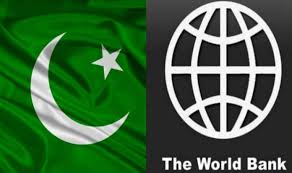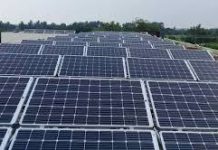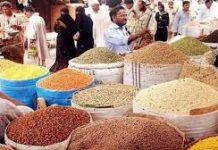By Muhammad Luqman
South Asia holds on to its top spot as the world’s fastest growing region, with growth set to step up to 7.0 percent in 2019, then 7.1 percent in 2020 and 2021, but the region needs to increase its exports to sustain its high growth and reach its full economic potential, according to World Bank’s regional economic update.
The latest edition of the South Asia Economic Focus, Exports Wanted, projects that Pakistan’s economic growth will decelerate to 3.4 percent in FY19 and 2.7 percent in FY20, as fiscal and monetary policies are tightened to address macroeconomic imbalances.
“Pakistan’s domestic demand is expected to contract while at the same time export growth will be gradual. On the supply side, services growth, which has been leading growth in the past, is projected to decline to 4.4 percent in FY19 compared to 6.4 percent in FY18,” the report added.
It warned that the agriculture and industrial sectors will also grow significantly lower in FY19 and FY20.
Growth is expected to recover to 4% in FY21 as structural reforms take effect and macroeconomic conditions improve. Remittances flows are likely to support the current account balance next year, the World Bank report suggested.
A more stable external environment will also support a pickup in economic activity starting from FY21. The trade deficit is projected to remain elevated during FY19, but to narrow in FY20 and FY21 as the impacts of currency depreciation, domestic demand compression, and other regulatory measures to curb imports set in.
“Pakistan’s growth must be driven by investment and productivity, which will put an end to the boom and bust cycles that affect the country every few years,” said Illango Patchamuthu, World Bank Country Director for Pakistan.
“It is entirely possible for Pakistan to transform its regulatory environment and reduce the cost of doing business. On the revenue front, reforms to improve tax administration and widen the tax base are critical. Over the adjustment period and beyond, actions outlined in the recently announced Ehsaas Program can protect the poor and vulnerable through social safety nets and safeguarding public spending on health and education.”
Across South Asia, imports grew much stronger than exports in the last two years, reversing the region’s exports dynamics of the early 2000s. Strong domestic demand, fueled by a consumption and investment boom, resulted in high import growth of 14.9 percent in 2017 and 15.6 percent in 2018, which is nearly twice as high as the region’s export growth. In comparison, exports grew by only 4.6 percent in 2017 and 9.7 percent in 2018.
“There’s no single solution that can unleash South Asia’s export potential and policymakers need to implement an ambitious range of reforms that can turn the region into the world’s next export powerhouse,” said Hans Timmer, World Bank Chief Economist for the South Asia Region. “Efforts should include trade liberalization, spurring entrepreneurship, and equipping citizens with the skills they need to compete on the global market. It would be good to be creative and relentless in all these efforts”.














